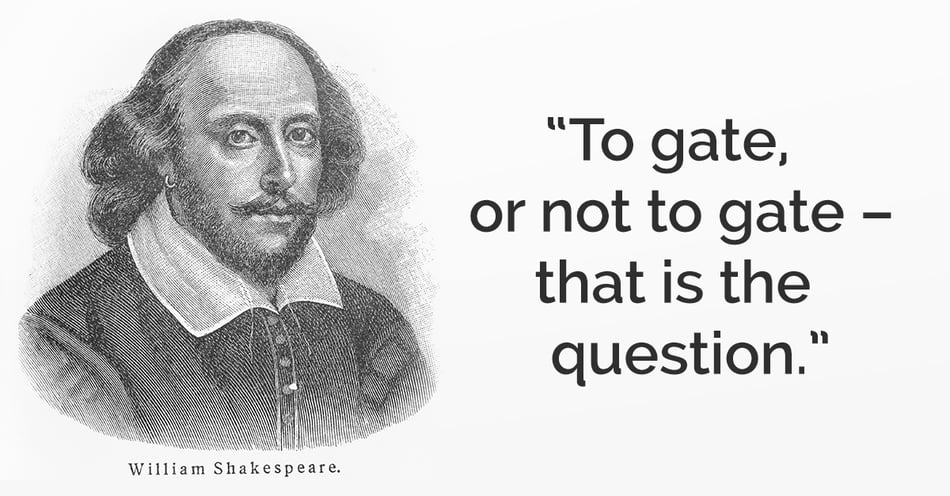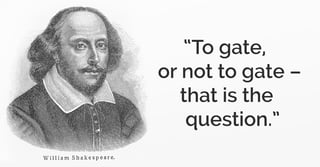Should You Gate Your B2B Marketing Content?


Gating content is the practice of requiring users to share some information (usually name and email at a minimum; sometimes more details are required) before they are permitted to download your content. We all have come across these forms and make the decision as to whether or not we want to divulge our information to receive the content. Sometimes we exit out without completing the form. Typically, gated information depends on the type of content. Blogs, sales sheets and videos are typically ungated but webinars need to be gated as you have to communicate the log-in information to the participant. But what about whitepapers, infographics, eBooks and other in-depth, thought leadership content that provides education?
In the past year or two, there has been a movement towards giving away more content for free which means removing the gate. But, that approach doesn’t work for everyone. We have the conversation with every client to educate them on the pros and cons of gating their content. Here is what we say to help them decide.
(Of course we know the content is going to be high value, it will be promoted via a campaign and we have a lead nurturing program in place so that we don’t lose these valuable contacts. These 2 topics are the subject of other blogs we have written.)
The Positives To Gating Content
You have made an investment in your marketing and acquiring new contacts for your email list or noting repeat visitors is adequate payment. Right?
What You Give Up
You will lose readers. Not every one, but some prospective customers will choose to leave the page. We have all done it. We know how many click to come to the page and we know how many downloads or form completes we have. The number of downloads is always significantly smaller. We employ tactics (or tricks) to inch that ratio higher but the fact is that you will lose readers.
The Positives to Removing the Gate
You will have more readers of your content. This helps increase brand awareness and if your content is good, it will male a positive brand impression. Additionally, your Search Engine Optimization will improve. You will have more readers, more engagement, longer time on page – and these are all metrics that Google loves. When Google loves you, you appear higher in the list of organic search. This is a big positive.
Basically it boils down to the goals set in the marketing strategy. So, if your goal is to acquire contact information, gate your content. If your goal is brand awareness or enhancing your brand perception, leave your content free.
Or, maybe you can have your cake and eat it too with a four strategies that act as a compromise.
- Gate the content only for the duration of the launch campaign. Then remove the gate when the campaign is over and you add this piece of content to your resource library.
- Consider a sneak peek. This is where you make a portion of the content available ahead of the gate but gate the full article.
- Be forthcoming about how you will use their information. We find placing a disclaimer in smaller font reminding prospective downloaders that they can unsubscribe at any time increases the number of downloads. Don’t believe me? A/B test that yourself and see if it works for your audience.
- Place the full content on the web page but gate the PDF. There is value to having a PDF or portable version that is well designed.
Contact us if you still have questions about whether or not to gate your content, or you want to talk about your marketing strategy.
Sources:
.png?width=2361&height=488&name=Mezzanine%20Logo_Horiz_RGB_on%20blue%20(1).png)
